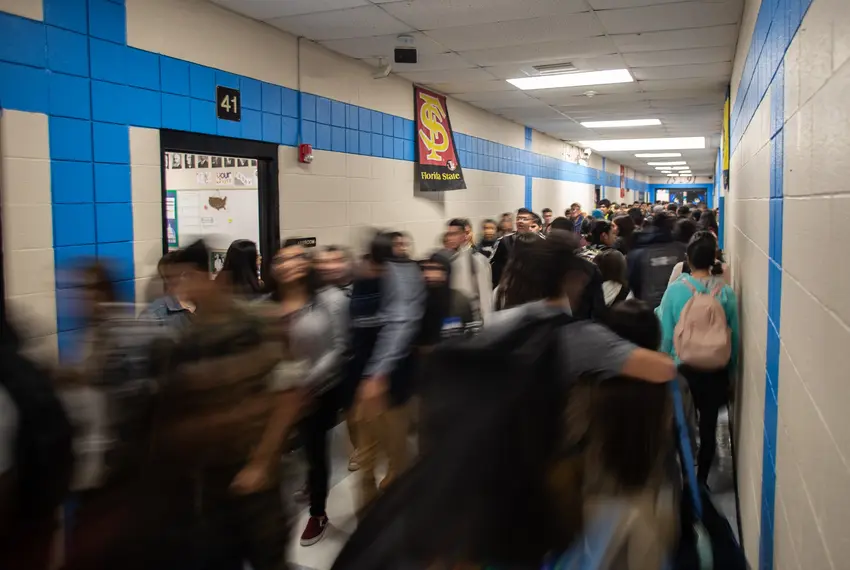- October 19, 2024
Nearly half of Texas high school students who earn college credits are Hispanic, study says

By Sneha Dey, The Texas Tribune
“Nearly half of Texas high school students who earn college credits are Hispanic, study says” was first published by The Texas Tribune, a nonprofit, nonpartisan media organization that informs Texans — and engages with them — about public policy, politics, government and statewide issues.
Nearly half of all public high school students in Texas who earn college credits before they graduate are Hispanic, a new study found. That makes Texas a national leader in closing the gap between Hispanic and non-Hispanic students who participate in dual credit programs.
Hispanic students in dual credit classes, however, graduate from college at a lower rate compared to peers who were also in those programs, underscoring the need to strengthen the transition from high school to college for students of color.
“We both have to focus on equalizing access to dual credit and providing dual credit students with the supports they need to go to college and complete college,” John Fink, a researcher with the Community College Research Center, said.
The Community College Research Center used National Student Clearinghouse data to look at high school juniors and seniors in 2015 who were enrolled in a dual credit course and tracked where they went in their first four years out of high school. Researchers selected that particular group of students to study the long term effects of dual credit on educational attainment. The researchers said it’s the first of its kind to break down dual credit outcomes by race, socioeconomic status and age by state.
The study found Black student participation, meanwhile, has lagged behind. Black students made up 8% of dual credit programs in the state, compared to 13% of Texas high school enrollment, according to a report on dual credit released Tuesday.
When Texas students made plans after high school, about half of dual enrollment students returned to the community college where they took dual credit classes for at least one term, according to the report’s findings.
The number of dual-credit students in Texas and around the country has ballooned in the past 10 years. Education leaders have seen dual credit programs as a way to encourage students to pursue higher education by giving them a chance to familiarize themselves with a college environment in high school. Earning college credit while still in high school has been linked to a higher educational attainment.
Texas legislators even changed how they finance community colleges to incentivize dual credit last year. Community colleges now get more money when high school students earn at least 15 college credit hours on their campuses. As part of the new funding system, state lawmakers also created the Financial Aid for Swift Transfer, or FAST, program, which gives community colleges extra money if they offer college-level courses at no cost to low-income students who qualify for free and reduced price lunch.
In the past year alone, dual credit participation has grown at record numbers, with about 250,000 students taking advantage of the FAST program to take dual credit classes at no cost, Sarah Keyton, the interim commissioner of the Texas Higher Education Coordinating Board, said in testimony in front of the Senate Higher Education Committee last month.
The Texas Tribune partners with Open Campus on higher education coverage.
This article originally appeared in The Texas Tribune at https://www.texastribune.org/2024/10/16/texas-dual-enrollment-high-school-community-college/.
Sign up for The Brief, The Texas Tribune’s daily newsletter that keeps readers up to speed on the most essential Texas news.
The Texas Tribune is a member-supported, nonpartisan newsroom informing and engaging Texans on state politics and policy. Learn more at texastribune.org.

